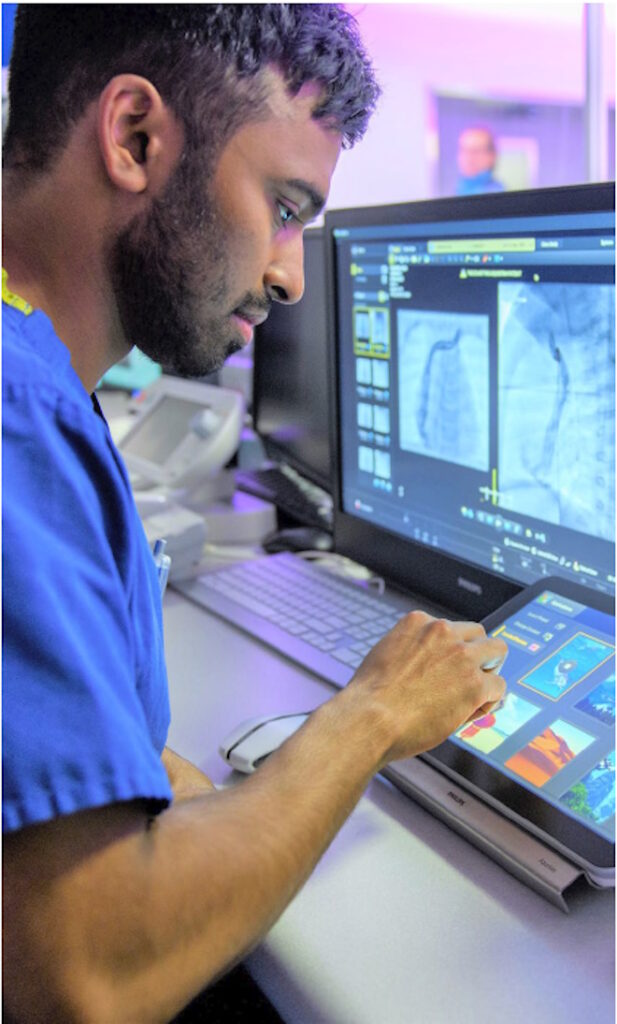
Insights + interviews
Healthcare sector embracing new care delivery models for better outcomes
The Philips Future Health Index 2023 Report shows that APAC’s healthcare sector are considering and implementing new care delivery models to enable better patient outcomes, improved ways of working, and to pave the way towards a more environmentally sustainable industry.
The eighth edition of the Future Health Index (FHI) 2023 report titled Taking Healthcare Everywhere was recently released by Philips.
The report shares a key finding that a new model of healthcare is emerging in the Asia Pacific region. This new model uses technology and data to bring care closer to patients. It looks to deliver care in a more efficient and environmentally sustainable way, even as the sector grapples with unprecedented financial pressures and staff shortages.
The region’s healthcare leaders are moving towards a distributed healthcare model that prioritises anytime-anywhere care beyond hospital walls by expanding virtual care to more areas of the healthcare ecosystem other than diagnostics – half (51 percent) of the healthcare leaders that participated say that their facility already provides intensive or critical care support virtually and 42 percent say they plan to do so in the future, whilst 62 percent of the region’s healthcare leaders say that they
are currently providing acute care at home virtually or through in-person visits, and 31 percent plan to do so in the next three years.
For decades, healthcare has been primarily delivered in centralized facilities like hospitals, but this latest report shows that APAC’s healthcare leaders are making bold changes as they navigate unprecedented staff and financial challenges. The good news for patients is that this puts them first. We are seeing a shift towards a distributed model of care delivery in APAC that uses smart and connected digital health technologies and data to bring care closer to patients, at home or in the community, to where they are, anytime-anywhere.
Caroline Clarke, CEO and Executive Vice President, Philips APAC
The adoption of new care delivery models in APAC is being powered by increased investment in digital health technologies and the expansion of virtual care to more areas of the healthcare ecosystem.

Digital health records are currently the top investment area for APAC’s healthcare leaders (48 percent). Almost three quarters (74 percent) of healthcare leaders are planning to invest in AI in the next three years, led by Singapore (84 percent), followed by Indonesia (76 percent) and Australia (63 percent), primarily to predict outcomes (e.g., predict how patients will respond to care plans for more accurate guidance on care pathways, etc.) (39 percent), for clinical decision support (e.g., in diagnosis or
treatment recommendations, early warning scores, automatic disease detection, clinical decision guidelines, etc.) (35 percent), and to integrate diagnostics (e.g., helping to generate diagnosis from various clinical sources such as imaging and pathology, clinical history, etc) (33 percent).
The FHI report reveals that – in the Asia Pacific region – embracing new care models will help the region’s healthcare leaders drive more efficient and sustainable ways of working. Two-thirds (66 percent) of healthcare leaders and younger healthcare professionals say that they are well equipped to work effectively with the new care delivery models, whilst 63 percent believe care will be delivered in a more environmentally friendly and sustainable way.
Such a new model will deliver benefits to patients including increased patient compliance and adherence to treatment (44 percent), improved patient education (36 percent), increased efficiency (e.g., shorter waiting times, more patients seen), collaboration with local communities to improve population health and more technologically advanced healthcare (all 35 percent).
The report also finds that APAC healthcare leaders are at the forefront of using technology to tackle the staff shortages that are becoming a global industry problem. Two-thirds (67 percent) of them (vs 56 percent globally) already use, or plan to use, digital health technology to reduce the impact of healthcare workforce shortages. Leaders in Indonesia (77 percent) and Singapore (75 percent) are especially focused on this.

The top three technologies to relieve the impact of staff shortages
regarded by those APAC leaders using or planning to use digital health technology are cloud-based technology to support access to information from any location (44 percent), technology solutions that connect with out-of-hospital settings (37 percent) and workflow technology (e.g., PACS, digital health records, patient flow automation) (35 percent).
Embracing digital transformation and new care delivery models could also help with attracting talent. Younger healthcare professionals identified being at the forefront of AI (39 percent) and new care delivery models that connect different care settings (33 percent) as top priorities when choosing
where to work. Chat bots providing patients with answers to basic medical questions (33 percent), portability of healthcare data between hospitals and practices (28 percent) and ability to access diagnostic capabilities from any location (26 percent) are cited by younger healthcare professionals as top technologies that will improve their work satisfaction.
Sustainability remains a high priority for APAC’s healthcare industry, but lack of access to appropriate technology (43 percent), lack of standardisation across the industry (37 percent) and inadequate interest from staff (32 percent) are cited as challenges preventing APAC healthcare leaders from implementing their sustainability initiatives.
Data and images attributed to Philips.









